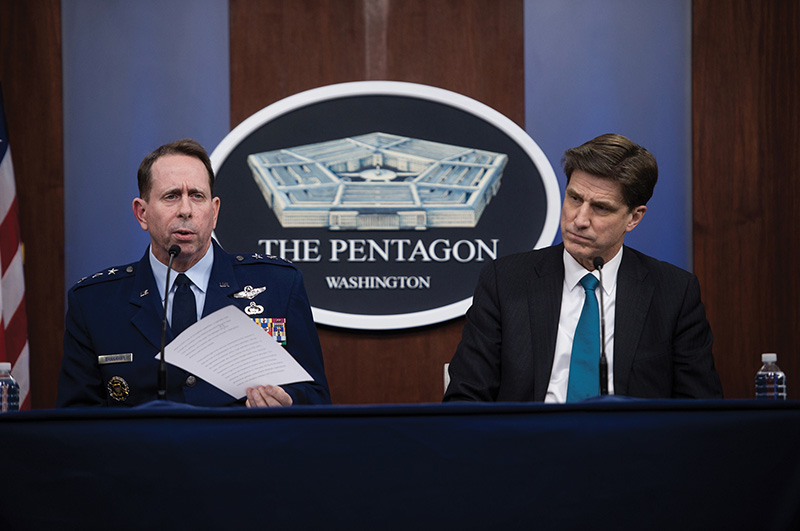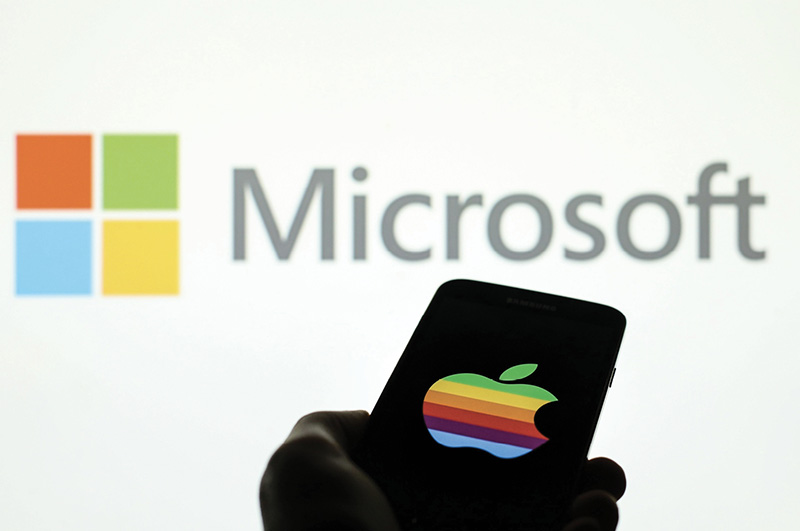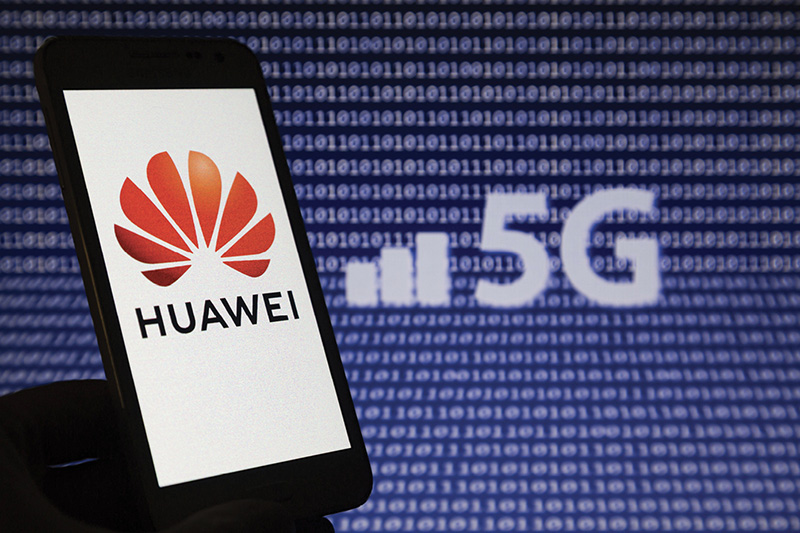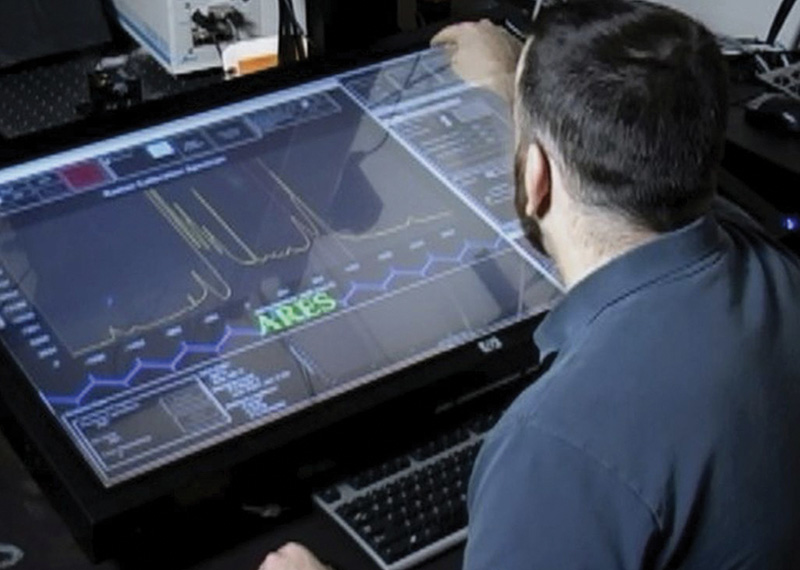Artificial Intelligence

DVIDS/Lisa Ferdinando/Office of the Secretary of Defense PA/6112536
Department of Defense Chief Information Officer Dana Deasy and USAF Lieutenant General Jack Shanahan, Director of the Joint Artificial Intelligence Center, brief the press on the adoption of ethical principles for artificial intelligence at the Pentagon, 24 February 2020.
Leveraging Allies Regarding Artificial Intelligence: The Critical Link between the Commercial and the Defence Industry
by Simon Poudrier
For more information on accessing this file, please visit our help page.
Colonel Simon Poudrier, CD, is an Air Logistics Officer who has served across Canada and on deployed operations for 25 years. While a student at the National Defense University (Washington D.C.), he was chosen for the first Industry Study on Emerging Technologies, focusing upon Artificial Intelligence within the Great Power Competition framework of the USA Department of Defense. As part of this study, he interacted with ‘cutting edge’ labs, schools, and businesses around the USA, Switzerland, and Canada regarding their perspective on related matters.
We should take advantage of the demand for considered and joined-up ethical principles and frameworks for the development and use of AI in democratic societies. The US is unlikely to take this role. […] the overwhelming dominance of a few powerful technology companies in the development of AI makes it less likely that a truly democratic debate of equals, encompassing the state, the private sector, universities and the public, is likely to emerge there. Similarly, China shows few signs of wishing to limit the purview of the state or state-supported companies in utilizing AI for alarmingly intrusive purposes.
~ House of Lords of the United Kingdom, 20181
Introduction
The fast-evolving Artificial Intelligence (AI) industry has left the United States (US) government lagging industry in terms of fully understanding AI’s impact upon the nation’s population and its potential applicability. Large firms have seized upon this control vacuum and have since operated virtually independently in a somewhat-unregulated environment. This lack of regulation, however, is not as prevalent outside the United States. Europeans, for example, seem to have come to terms with the new AI reality, and they have initiated government-wide discourses with respect to adopting AI in their nation’s best interests. Acknowledging that current AI commercial applications are powered by the data that is mainly harvested from its population, European countries have enforced regulations regarding privacy of information, which has cooled and arguably better structured AI’s progression and adoption within their territories.
The US government recently released the “American AI Initiative,” an AI perspective centered upon the American “own way of life,” as driven by US industry. A glance at other nations’ AI policies provides an alternate and insightful point of view with respect to the AI industry pertaining to defence, and its strong link with global commerce. Based upon a study of current allies’ AI policies and perspectives, this article highlights the immediate requirement for the US to evaluate the impact of its aggressive economic strategy, and to further engage and leverage allied governments in the AI industry defence nexus. The advantages of a strong engagement with America’s allies will be examined through the definition of the generic AI industry condition and structure, the inherent challenges of the AI industry related to defence, and the role of various governments and related inherent policies regarding AI with respect to defence.
AI Industry Definition, Condition, and Structure
AI Industry – Technicalities
AI was discussed for the first time more than half-a- century ago, and it has since gone through periods of development and stagnation. Most of the advancements pertaining to Research and Development (R&D), which have led to today’s AI, have originated from US government-funded initiatives. The advancement of computing power and miniaturization, along with the availability of digitized data in recent decades, has greatly-improved the potential uses of AI, making it a viable industry. Large companies have emerged in the US and China, and have taken the global lead with respect to R&D, and consequently, the future of the AI industry. AI applicability may now appear limitless. However, American researchers argue that the lack of an official US government definition of AI makes the assessment of its industry rather complicated. For the purpose of this article, the broader definition of AI will be considered and referred to as “…the industry meant to use electronic data to provide an inferring agent or algorithm a human-like reasoning, making an AI system conduct a task.”
AI differs from other industries, due to its inherent complex nature of being a convergence of disciplines in an ecosystem. One of the main differences between the AI industry and a more-traditional defence industry, rests in the private sector-driven ‘supplies’ required for the industry to exist. These supplies are the data, the computer-coding professionals programming the algorithms, the computing power, and the sensors providing the data to the feedback loop. The Internet of Things (IoT) explains the ecosystem composed of the devices and technologies that send and receive data that powers the overall AI system. These supplies must be in synchronization in order to power AI in its current form, and for a specific and limited purpose only. AI applied to the medical field, for example, may be discussed in terms of “…image analysis to determine potential prostate cancer development in patients.” The same AI system however, particularly the data-set which are the thousands or millions of images required to teach the AI system to search for traces of prostate cancer, would not be valid for analyzing another type of cancer. Consequently, the expertise and technology required to power an AI system is highly technical, and requires significant capital investments in order to be created.
AI Industry – Capital
The US Defense Advanced Research Projects Agency (DARPA), during the first week of March 2019, was granted an allocation of $2B spread over five years for its sub-projects, which are part of its overall ‘AI Next’ project.2 This substantial funding could be considered a significant investment in other industries. However large corporations involved in the AI race spend billions of dollars every year on R&D. Amy Webb, a technology futurist at New York University, suggests that there are only nine global companies controlling the future of Artificial Intelligence. These consist of the American companies Amazon, Apple, Facebook, Google, IBM, and Microsoft, and the Chinese companies Baidu, Alibaba and Tencent,3 and they aim to commercialize products for the masses. They also possess the funding and the scope of ambition to create the ecosystems required to truly power the various applicabilities of the AI industry. Lucidly, a congressional research service report on the AI industry highlighted: “It is unusual to have a technology that is so strategically important being developed commercially by a relatively small number of companies.”4 Arguably, the US possesses the advantage in that the largest firms are American. Outside the US, however, the Chinese firms are gaining ground, and they possess lots of data to power their AI innovations.

Filip Radwanski/Alamy Stock Photo/2B1N8NC
AI Industry – Data
An AI system must have access to a large quantity of relevant data to power and improve its algorithms. This requirement is critical to understanding how the AI industry relates to defence. In the civilian AI market, individuals surrender their data to the large firms in exchange for free services through personal computers or mobile devices applications, which aim at improving their quality of life, such as navigation or translation services. In the field of defence, however, an enemy will not provide its critical information in order to power an AI system aimed at taking its forces down. Data access is critical, and the network and IoT providers are capitalizing upon its potential, both for the civilian sector, and probably for the defence sector…

ZUMA Press, Inc./Alamy Stock Photo/2AHDFBF
The Chinese giant company Huawei, a telecommunication, phone and IoT provider, has equipped the United Kingdom (UK), Spain, and Germany among others, with most of their 4G backbone network technology. Internal figures maintain that 63 percent of the company’s global revenue comes from selling telecommunication network equipment, or the so-called operational technology, while Huawei’s cellular phone sales in Europe compete closely with Apple’s.5 Huawei is determined to push its 5th generation (5G) of telecommunication network technology to Europe, which will be the next generation of IoT interconnectivity. Faster, and more powerful in its applicability, 5G is the ‘missing link’ to fully implement disruptive AI products to our everyday life, such as through autonomous vehicles. In other words, Huawei is potentially in line to connect Europe to its next generation of networks and data exchange, and, de facto, establishing itself as the prime AI enabler. The US has major concerns with respect to the potential cross-sharing of data from the private sector to the defence sector. To that effect, the US Secretary of State has threatened European countries to stop sharing military information, should they decide to continue implementing the Huawei telecommunication infrastructure.6
AI Industry – Allies
Over the past two years, the US administration has sustained an aggressive economical protectionism strategy against long-time allies, even suggesting, for example, that BMW cars were a threat to the US National Security.7 The American administration has also suggested that countries hosting US troops should pay the cost of American troop presence, plus an additional 50%, for the privilege of hosting Americans on their territory, in addition to suggesting that Russia should be re-integrated in the G7.8 Needless to say, these bewildering changes in American foreign policy may adversely alter the decision-making process of long-time allies. Before these recent changes, the US could unquestionably count upon its allies to follow its lead, but the decaying of the commercial and defence relationships may erode some of the strong fabric holding the alliance together. Europeans are currently deciding upon the future of their network provider. The UK has reportedly found a way to ensure that there would be no ‘back-door’ sharing of data with China through the Huawei network. Other countries, also coveting China’s potential commercial market, may pursue this alternate vision, forging US economic ties, while discarding their warnings. Highlighting the seriousness of this situation, Germany announced, on 19 March 2019, that it would not close competition to the Chinese giants Huawei and ZTE, and would allow them to compete for Germany’s future 5G network.9 Thailand, an American ally in Asia, announced the same intent by launching a 5G testbed technology powered by Huawei in February 2019.10

Sueddeutsche Zeitung Photo/Alamy Stock Photo/2ABMD0C
Professor Sabine Maasen (Director MCTS), speaks at the Institute for Ethics in Artificial Intelligence, in Munich, 7 October 2019.
The private sector of the AI industry depends upon data, and the military AI is no different. A strong alliance would ensure the alignment of the network technology among partners to power the next generation of this industrial evolution, as well as the data required to power it. The recent acrimonious tone of the US administration towards long-term commercial and defence partners has made observers question the US position regarding the importance and validity of the alliances previously established. This new strategy may favour the current US manufacturing industry, but it could greatly weaken the development of the ramifications of networks required for the AI industry in defence among America’s allies. Because great commercial partners rarely enter into conflict with one-another, one could only hope that the privileged commercial relationship the US has used to extend its global presence since the Second World War remains strong, as we advance through the AI era.

DVIDS/Marisa Alia-Novobilski/Air Force Research Laboratory/2936615
A materials researcher at Wright-Patterson AFB, Dayton, Ohio, examines experimental data on the ARES artificial intelligence planner. The ARES Autonomous Research System, developed by the Air Force Research Laboratory, uses AI to design, execute, and analyze experiments at a faster pace than traditional scientific research methods.
AI Industry in Defence and Its Challenges
AI Industry in Defence – Military Strategy
The US third offset strategy is described by the Deputy Secretary of Defense as encompassing “…autonomous learning systems, human-machine collaboration decision-making, assisted autonomous weapons and high-speed projectiles.”11 All four components of this strategy consider the integration of data-powered technologies critical to military affairs. In line with this strategy, defence analysts suggest that the groundbreaking use of AI for defence will enable faster decision-making, which, in a more kinetic environment, translates to a faster OODA loop (Observation, Orientation, Decision, Action).12 This speed increase requirement has actually been rendered necessary by the advancement of adversarial weaponry. 13, 14 The use of AI in defence is not new. Drones have been used for surveillance, robot soldiers for combat, and imagery analysis has already made its way into our military apparatus. Vehicles and buildings targeted in Iraq and Syria had been recognized by AI powered-systems 80% of the time, since 2017. 15 As enemies increase their understanding of AI systems, it will invariably introduce deception tactics in the field to counter image-powered AI. Cooperation with foreign nations and their AI capabilities may expedite the continuous improvement of the data-sets required for enemy analysis, and help anticipate any potential adversarial movement. As allies combine their analysis, based upon a multiplication of capability powered by various AI systems, a strong alliance of contributing nations would be able to counter this complex issue. 16 The opposite, therefore, holds true for a more isolated country, such as China or Russia, which could not access a vast network of shared data. This ‘double-incentive’ constitutes why a strong cooperation among allies must be fostered with respect to AI. A solid allied network powering a world-wide, live surveillance AI ecosystem could provide the US with a formidable AI global presence.
AI Industry in Defence – AI-Powered Software and Hardware
In line with the third offset, air combat simulation tests in 2015 revealed that a top pilot was beaten by an AI system. [While this may well be an isolated incident – Ed.], the assessment of the combat situation worked at 250 times the speed of the human thinking process.17 Recent advancements in the concept of “loyal wingman,” where AI-coordinated drones would fly alongside manned fighter aircraft, suggest a highly probable future for this technology. The exorbitant costs of the F-22 and F-35 programs, as examples, may also trigger a requirement for cost reductions, and precipitate a greater reliability upon AI-powered capabilities. Should the US intend to fight as part of a coalition, it should take the lead in order to ensure further allied integration of development in this domain. Subsequent doctrine required for sustaining this new force structure in combat should also be coordinated through the North Atlantic Treaty Organization (NATO). Such strong coordination for the future AI capabilities regarding air combat can only bring stability to the AI industry with respect to defence, particularly as it applies to the US.

Nick Moore/Alamy Stock Photo/2AEFDA6
Flags on the Mall awaiting NATO leaders for the NATO summit in London, 3 December 2019.
Since AI applications are mostly being developed by the private sector for mass commercialization, and therefore meant to improve quality of life, the use of AI for autonomous weapons is a relatively-new phenomenon. Societal movements have challenged AI development for defence. Employees in commercial AI companies, such as Google, have been adverse to partnering with the Department of Defense (DoD), due to ethical concerns.18 Resistance to incorporating AI technology into existing weapons systems and processes exists, even within the Department.19 Facing a similar issue in France, the French Prime Minister, Edouard Philippe, commanded a study which concluded that the time for alliances was even more critical, as the “…building blocks to create weapons are no longer made by the military industrial base.”20 In other words, he implied that AI technology may create autonomous weapons which basically circumvent the International Traffic in Arms Regulations (ITAR). Taking action on the conclusion of this study, the French government created the Commission interministérielle pour l’étude des exportations de matériels de guerre (Inter-ministerial Committee for the Study of Military Equipment Exports) to address the very issue. The committee is composed of representatives from defence, foreign affairs, international development, economy, and finance, and they report to the General Secretariat for Defence and National Security. This new governmental structure provides a solid starting point to address the new reality of sensitive AI powered weapons trade and transfer, as well as their use. A US government cooperative approach with this type of foreign agencies could strengthen the control over the weaponization and distribution of AI materiel throughout the world, and optimize the limited resources the US would eventually have to throw at this issue.
AI Industry Outlook on Role of Government and Policies
AI Industry in Defence – Ethics
AI used autonomously in a defence system could be described as being an amoral platform capable of making moral actions. To remain morally acceptable from a defence perspective, the AI industry for defence should be in line with United Nations (UN) principles, something the report to the US Congress views as a limitation. They also suggest that AI failure modes will be multiplied in complex environments, which could rapidly transform a successful operation in a disaster.21 The US military shooting of a Patriot missile, which destroyed a UK Tornado and a US F-18 during operations in the Middle East, are examples of such disastrous AI software technological mishaps.22 It is not surprising, therefore, that a large number of states have called for a treaty banning “…fully autonomous weapon systems” due to ethical considerations, while others have called for formal regulations or political declarations which may eventually put pressure upon American self-reliance defence ambitions.23 Less than a year ago, the British House of Lords produced a report on AI and its implications for their country. They highlighted the differences in the interpretation of AI autonomous weapons, and even compared their version with those of, for example, the Vatican (Appendix A). The UK government drafted an AI Code Overarching Principle to clearly establish their governmental position with respect to the use of AI. The fifth principle of this code states: “The autonomous power to hurt, destroy or deceive human beings should never be vested in artificial intelligence.”24 The US has participated in international discussions of the Lethal Autonomous Weapon Systems (LAWS) at the UN Convention on Certain Conventional Weapons (CCW), but no firm resolution has been adopted. This could represent a unique opportunity for the US to take the global lead in championing this noble effort, which could only be opposed by ill-intended enemy nations.
French President Macron approached the lack of control over AI and weaponry from a government imperative by stating: “The role of the State must be reaffirmed [in AI]: market forces alone are proving an inadequate guarantee of true political independence.”25 Following this intervention, the European Commission (the highest EU governing body) created the European AI Alliance Working Group to support the work done at the European Commission by the AI High Level Expert Group (AI-HLEG).26 The AI-HLEG is composed of industry (SAP, Airbus), academics, and governmental representatives, and it demonstrates the will of the EU to embrace and coordinate the efforts to grow AI in a cohesive manner for all the countries involved in its various potential domains of applicability.

Alexandros Michailidis/Alamy Stock Photo/2B088CF
EU Commissioner for Internal Market Thierry Breton addresses a press conference on Artificial Intelligence, 19 February 2020, in Brussels.
The Multi-layered approach to Europe for the advancement of AI ethics exemplifies cohesiveness in a common desire to improve AI and its use for the greater good. A strong cooperation with such working groups could undeniably help align allies, and create a synergy in the use and development of AI that could benefit the US AI industry. The sharing of networks and technically-specialized manpower required to create and sustain a safe and allied AI ecosystem are graphic examples of the positive returns of such cooperation.
AI Industry in Defence – Government Perspective
Canada recently welcomed the world’s first technology diplomat. Danish government official Casper Klynge was visiting our country in order to discuss how Canada was going to protect itself in preparation for the next federal elections. Mr. Klynge sees his job as a protector of democracy from the ill use of AI. A driving force behind his work is preventing another Cambridge Analytica scandal. The British firm had utilized Facebook users’ data to power an AI system capable of predicting and influencing American voters during the 2016 presidential campaign. The alleged influence of Russian cyber actions with respect to the same elections also adds a level of concern regarding the lack of control in the AI industry, and suggests a need for the US government to better regulate AI. According to Mr. Klynge’s research, over 500M people had their data used without their consent in the last 10 months alone.27 This fact has raised many questions regarding the use of the AI industry for defence. In a world where AI is controlled by private businesses, who has the responsibility to regulate and ensure its proper use? The Europeans have relayed the matter to their government [the EU], which has not been the case in the US. Does a foreign country’s use of data and AI against another democracy constitute a matter of national defence? Allied governments must coalesce to ensure cooperation in the name of world-wide democracy and security. It would be to the benefit of the US to be part of, and perhaps lead such working groups, which could better protect democracies from adversarial AI use in domains or applications yet unknown, or not yet mastered by the Department of Defense.

Stine Jacobsen/Reuters/RTS17066
Denmark’s tech ambassador Casper Klynge poses for a picture in Copenhagen, Denmark, 15 June 2017.
AI Industry in Defence – Great Power Competition
China has not let much stand in its path to advance its AI capabilities in trying to reach their 2030 “World Leading Level” of AI. Its leading AI firm, Baidu, (Google equivalent) created AI software capable of surpassing human-levels of language recognition, almost a year ahead of Microsoft. In 2016 and 2017, a Chinese ‘start-up’ company team won top prize at an international Visual Recognition Competition. In the spring of 2017, a Chinese university with ties to the military demonstrated an AI-enabled swarm of 1,000 unmanned aerial vehicles at an airshow.28 It is clear that China is making significant progress with AI for defence, and it has the means to be a strong competitor to the US. Their technology, however, is largely being used to monitor the Chinese population, and to enforce the power of the Communist Party.
The US has become the uncontested leader of the free world through pursuit of its democratic idealisms. It would be to the Americans’ advantage to use this leadership in AI in order to solidify its moral grounds, ethics, and global leadership through this industrial revolution. The aggressive populist discourse pertaining to the current administration may, however, diminish the strength of US influence. The current state of affairs suggests that firms such as Google and Amazon may be better ambassadors for the US in the field of AI, and yet, they remain global, publicly-traded commercial entities. To that effect, General Dunford, then-Chairman of the Joints Chiefs of Staff, recently highlighted that the new Google AI centre established in China could translate into a transfer of technology that could eventually support their government.29 The US government has traditionally cultivated a long-standing defence industrial base relationship with NATO, through ‘five-eyes,’ and through other alliances around the world. These strong, long-standing alliances are of inestimable value as leverage in the developing domain of AI, and should be harvested rather than challenged, to power the future of AI in the defence industry.

UPI/Alamy Stock Photo/W0N41E
United States Marine Corps General Joseph F. Dunford, Chairman of the Joint Chiefs of Staff.
Conclusion
The AI industry is continuously evolving, and it remains largely unregulated. Virtually every country is involved in the race to master AI. The US has built a commanding lead with respect to the commercial civilian application of AI through its global firms, but it may be at the same level as other countries, such as China, regarding its military application. AI sources its power in the successful use and analysis of large, validated data, which virtually everyone produces every day through the use of the Internet of Things. China is ‘knocking on Europe’s door,’ as well as the rest of the world, with tomorrow’s network technology to power the IoT. It is simultaneously offering a large marketplace for economically struggling countries.
The US has already established strong economical and defence alliances with most of the countries coveted by China. The US would therefore strongly benefit by cooperating with its long-time allies to develop a common and ethical AI technology, and strengthen its efforts in developing the applicability of the AI industry for the defence sector. There are plenty of opportunities for the US to lead this effort, but the hostile discourse vis-à-vis traditional allies may limit such opportunities, and consequently, have an adverse effect upon alliances which could ultimately compromise tomorrow’s AI industry and its defense nexus.
|
Austria Autonomous weapons systems (AWS) are weapons that in contrast to traditional inert arms, are capable of functioning with a lesser degree of human manipulation and control, or none at all. |
|
France LAWS should be understood as implying a total absence of human supervision, meaning there is absolutely no link (communication or control) with the military chain of command. The delivery platform of a LAWS would be capable of moving, adapting to its land, marine of aerial environments and targeting and firing a lethal effector (bullet, missile, bomb, etc.) without any kind of human intervention or validation. |
|
The Holy See An autonomous weapon system is a weapon system capable of identifying, selecting and triggering action on a target without human supervision. |
|
Italy LAWS are systems that make autonomous decisions based on their own learning and rules, and that can adapt to changing environments independently or any per-programming and they could select targets and decide when to use force, and would be entirely beyond human control. |
|
The Netherlands A weapon that, without human intervention, selects and attacks targets matching certain predefined characteristics, following a human decision to deploy the weapon on the understanding that an attack, once launched, cannot be stopped by human intervention. |
|
Norway Weapons are weapons systems that are capable of carrying out tasks governed by international humanitarian law, in partial or full replacement of a human in the use of force, notably in the targeting cycle. |
|
USA A weapon system that, once activated can select and engage targets without further intervention by human operator. |
Written evidence from Professor Noel Sharkey (AIC0248)
Appendix A: Definition of lethal autonomous weapons systems used by various countries.30
Notes
- Committee on Artificial Intelligence, House of Lords, Report of Session 2017-19, AI in the UK: Ready, willing and able?, 16 April 2018, published by the Authority of the House of Lords, UK. p. 119.
- “Les États-Unis Annoncent 9 Projets de Recherche Inusités En IA | ICI.Radio-Canada.Ca.” n.d. Accessed 13 March 2019, at : https://ici.radio-canada.ca/nouvelle/1157375/intelligence-artificielle-darpa-algorithmes-futur-ai-next?depuisRecherche=true.
- “Deus Ex. Artificiel Intelligence?” n.d. 1A (blog). Accessed 7 March 2019, at: https://the1a.org/shows/2019-03 05/deus-ex-artificial-intelligence.
- Daniel S Hoadley and Nathan J Lucas. 2018. “Artificial Intelligence and National Security,” Congressional Research Service, p. 97.
- Laurens Cerulus, “China’s Ghost in Europe’s Telecom Machine,” in POLITICO, 11 December 2017, at: https://www.politico.eu/article/huawei-china-ghost-in-europe-telecom-machine/.
- Derek B. Johnson, 22 February 2019, “Pompeo: Huawei Deals Threatens Info-Sharing with Allies -.” FCW. Accessed 18 March 2019, at: https://fcw.com/articles/2019/02/22/pompeo-huawei-info-sharing.aspx.
- “Merkel Rejects Trump Claims That German Cars Are Threat,” Patrick Donahue, Bloomberg.com, 16 February 2019, at: https://www.bloomberg.com/news/articles/2019-02-16/merkel-pushes-back-on-u-s-claims-that-german-cars-are-a-threat.
- Nick Wadhams and Jennifer Jacobs. Bloomberg. “Trump Wants Allies to Pay Cost of U.S. Troops Abroad ‘Plus 50%,’”. Accessed 13 March 2019, at: http://time.com/5548013/trump-allies-pay-cost-plus-50-troops/.
- Daphné Rousseau, 2019. “L’Allemagne avance avec Huawei sur sa 5G malgré les menaces américaines,” in La Presse, 19 March 2019, at : https://www.lapresse.ca/techno/mobilite/201903/19/01-5218763-lallemagne-avance-avec-huawei-sur-sa-5g-malgre-les-menaces-americaines.php.
- “US Allies Defy Trump Administration’s Plea to Ban Huawei from 5G Networks.” n.d. Accessed 23 March 2019, at:. https://ca.finance.yahoo.com/news/us-allies-defy-trump-administration-062548817.html.
- Kathleen H. Hicks et al., “Assessing the Third Offset Strategy.” Accessed 17 March 2019, at: https://www.csis.org/analysis/assessing-third-offset-strategy.
- Jean-Christophe Noël, and Institut français des relations internationales. 2018. Intelligence artificielle: vers une nouvelle révolution militaire? At : https://www.ifri.org/sites/default/files/atoms/files/fs84_noel.pdf., p. 36.
- Naveen Joshi. 2018. “4 Ways Global Defense Forces Use AI,” in Forbes. Accessed 9 March 2019, at: https://www.forbes.com/sites/cognitiveworld/2018/08/26/4-ways-the-global-defense-forces-are-using-ai/.
- “Artificial Intelligence in Defense | KPMG Global.” 2018. KPMG. 17 October 2018, at: https://home.kpmg/xx/en/home/insights/2018/04/artificial-intelligence-in-defense.html.
- Noël, p. 34.
- Ibid, p. 52.
- Ibid, p. 38.
- https://www.facebook.com/drewharwell. n.d. “Google to Drop Pentagon AI Contract after Employee Objections to the ‘Business of War,’” in Washington Post. Accessed 7 March 2019, at: https://www.washingtonpost.com/news/the-switch/wp/2018/06/01/google-to-drop-pentagon-ai-contract-after-employees-called-it-the-business-of-war/.
- “Artificial Intelligence at the Service of the Citizen — AI White Paper Draft Documentation.” Government of Italy. Accessed 27 February 2019, at: https://ai-white-paper.readthedocs.io/en/latest/index.html. p. 2.
- Cédric Villani et. al., 2018. “For a Meaningful Artificial Intelligence – Towards a French and European Strategy,” French Parliamentary mission, p. 127.
- Hoadley and Lucas, p. 7.
- Staff and agencies. 2006. “Coroner Condemns ‘glaring Failures’ That Led to US Missile Killing RAF Crew,” in The Guardian, 31 October 2006, sec. UK news at: https://www.theguardian.com/uk/2006/oct/31/military.iraq.
- Hoadley and Lucas, p. 16.
- Committee on Artificial Intelligence, House of Lords, 2018, p. 120.
- Villani et. al., p. 6.
- European Commission. 2018. “High-Level Expert Group on Artificial Intelligence,” Digital Single Market – European Commission. Accessed 14 June 2018, at: https://ec.europa.eu/digital-single-market/en/high-level-expert-group-artificial-intelligence.
- ICI.Radio-Canada.ca, Zone International. 2019. “Le premier « techno-diplomate » du monde en visite au Canada.” Accessed 20 March 2019, at: https://ici.radio-canada.ca/nouvelle/1154879/danemark-technologie-diplomatie-gafa-donnees-ambassade.
- Hoadley and Lucas, p. 23.
- La Presse. 2019. “Le chef d’état-major américain déplore le retard de son pays dans la 5G,” 21 March 2019, at : https://www.lapresse.ca/techno/mobilite/201903/21/01-5219133-le-chef-detat-major-americain-deplore-le-retard-de-son-pays-dans-la-5g.php.
- Committee on Artificial Intelligence, House of Lords, 2018, p. 104.







